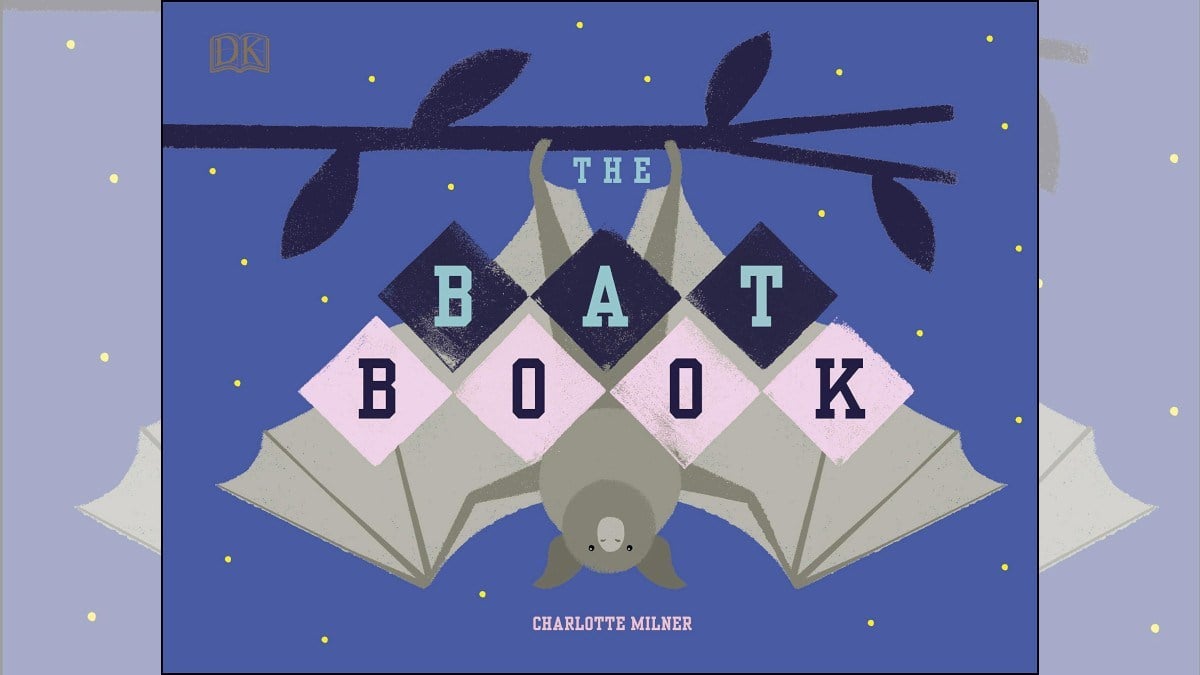This Week’s Word Is “Bats.”
I’ve written a few reviews for Batman-related books during my years on GeekDad, but never one about bats. The Bat Book by Charlotte Milner is published by DK and is the follow up to The Bee Book and The Sea Book. These books are slim volumes filled with illustrations that give a great overview of the subject in question. They’re aimed at children aged around 8 upwards. If you have somebody in your house who is batty about bats, then they’re going to love The Bat Book.
What Is The Bat Book?
It’s a slim 50-page book that looks at bats: their biology, ecology, and the things that threaten their existence today. It’s a great jumping-off point for anybody wanting to learn about these imagination inspiring creatures.
Being a children’s book, The Bat Book is illustration-heavy, broken up with small chunks of text. It opens with a description of where bats live and what they look like. There are over 1,300 species of bat with all manner of variation. Did you know there were Megabats and Microbats? This book looks at the differences and similarities between the two. We can also find out about the physiology of the bat and why its wings are more like a human arm than a bird’s wing.
Why do bats hang upside down? Apparently, it’s not so they look cool in vampire movies. Vampire bats do, however, make an appearance on the “What do they eat?” pages. How do they find their food? Of course, no book about bats would be complete without a description of echolocation, but did you know that long-tailed moths have evolved in order to avoid becoming a bat’s dinner?
Bats in the environment.
Bats are involved in pollination of some plants, and more obviously seed dispersal. They also act as vital pest control for the farming of some vital foodstuffs, by which I mostly mean chocolate. Bats improve their environment, whether they reside in the rainforest, desert, or savanna. The Bat Book explains how.
The final section of the book asks why bats are in decline, why you shouldn’t fear if one turns up at your house, and how to make life for bats in your area a little bit easier. If you want to learn how to make your garden more bat-friendly, that’s in here too. As a bonus, this will not only make your garden look lovely, it will also attract the butterflies.
Why Read The Bat Book?
This a great little book, packed full of easily accessed information. The presentation is lovely and showcases the subject matter perfectly. On the strength of The Bat Book, I would happily pick up copies of the other books in the series and I would hope to see lots more in the same vein. Butterflies, Owls, Sharks, and Dinosaurs; any of those would be awesome, as would a whole slew of other subjects. It’s a series that could run and run (or maybe, fly).
This is a great book to inspire nature lovers to find out more about bats, a group of animals that literally hide in the shadows, and perhaps get overlooked. It’s perfect for school projects about bats, mammals, ecology, or endangered animals. The Bat Book may be small but it is mighty.
If you’d like to pick up copy of The Bat Book, you can do so here, in the US and here, in the UK.
If you enjoyed this review, do check out my other Word Wednesday posts, here.
Disclosure: I received a copy of this book in order to write this review.






